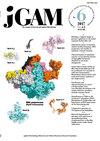Genome analysis and optimization of γ-aminobutyric acid (GABA) production by lactic acid bacteria from plant materials.
IF 0.8
4区 生物学
Q4 BIOTECHNOLOGY & APPLIED MICROBIOLOGY
Journal of General and Applied Microbiology
Pub Date : 2021-10-22
Epub Date: 2021-06-05
DOI:10.2323/jgam.2020.10.002
引用次数: 6
Abstract
Gamma-aminobutyric acid (GABA) plays a key role as an inhibitory neurotransmitter in the mammalian sympathetic nervous system and has other health benefits. Molecular characterization, genome analysis, and optimization were investigated to improve GABA production of a selected strain of lactic acid bacteria. Eleven isolates from plant materials were screened for GABA productivity and were identified based on phenotypic and genotypic characteristics. The most potent strain was chosen for genome analysis and GABA production optimization using the response surface methodology (RSM). Each of the two strains was closely related to Lactobacillus plantarum, Lactobacillus brevis, Weissella cibaria, Leuconostoc pseudomesenteroides while each strain was similar to Lactobacillus pentosus, Enterococcus, and Leuconostoc mesenteroides. They produced GABA ranging from 0.036 ± 0.000 to 17.315 ± 0.171 g/L at 72 h-cultivation. Among them, the most potent strain, SL9-6, showed the highest GABA production (17.315 g/L) when cultivated with 10% (v/v) inoculum for 48 h. The draft genome sequence of strain SL9-6 exhibited 96.90% average nucleotide identity value and 74.50% digital DNA-DNA hybridization to Lactobacillus brevis NCTC 13768T. This strain contained a glutamate decarboxylase gene system (gadA, gadB and gadC). Optimal culture conditions were determined as 40.00 g/L glucose, 49.90 g/L monosodium glutamate, pH 5.94, and 31.10°C by RSM, giving maximum GABA production of 32.48 g/L. Results from RSM also indicated that monosodium glutamate concentration, pH, and temperature were significant variables. GABA production significantly improved here could promise further application of strain SL9-6.乳酸菌利用植物材料生产γ-氨基丁酸(GABA)的基因组分析及优化
γ -氨基丁酸(GABA)作为一种抑制性神经递质在哺乳动物交感神经系统中起着关键作用,并具有其他健康益处。研究了一株乳酸菌的分子特征、基因组分析和优化,以提高其GABA的产量。从植物材料中筛选了11株GABA产率,并根据表型和基因型特征进行了鉴定。选择最有效的菌株进行基因组分析和响应面法优化GABA产量。两株菌株均与植物乳杆菌、短乳杆菌、羊肠魏氏菌、假肠系膜白杆菌亲缘关系密切,与戊酸乳杆菌、乳酸肠球菌、肠系膜白杆菌亲缘关系相近。在72 h的培养下,它们产生的GABA范围为0.036±0.000至17.315±0.171 g/L。其中,菌株SL9-6在10% (v/v)的接种量下培养48 h, GABA产量最高(17.315 g/L)。菌株SL9-6基因组序列草图与短乳杆菌NCTC 13768T的平均核苷酸同源性为96.90%,数字DNA-DNA杂交率为74.50%。该菌株含有谷氨酸脱羧酶基因系统(gadA、gadB和gadC)。经RSM测定,最佳培养条件为葡萄糖40.00 g/L、味精49.90 g/L、pH 5.94、温度31.10℃,GABA产量最高可达32.48 g/L。RSM结果还表明,味精浓度、pH和温度是显著的变量。菌株SL9-6的GABA产量显著提高,有望进一步推广应用。
本文章由计算机程序翻译,如有差异,请以英文原文为准。
求助全文
约1分钟内获得全文
求助全文
来源期刊

Journal of General and Applied Microbiology
生物-生物工程与应用微生物
CiteScore
2.40
自引率
0.00%
发文量
42
审稿时长
6-12 weeks
期刊介绍:
JGAM is going to publish scientific reports containing novel and significant microbiological findings, which are mainly devoted to the following categories: Antibiotics and Secondary Metabolites; Biotechnology and Metabolic Engineering; Developmental Microbiology; Environmental Microbiology and Bioremediation; Enzymology; Eukaryotic Microbiology; Evolution and Phylogenetics; Genome Integrity and Plasticity; Microalgae and Photosynthesis; Microbiology for Food; Molecular Genetics; Physiology and Cell Surface; Synthetic and Systems Microbiology.
 求助内容:
求助内容: 应助结果提醒方式:
应助结果提醒方式:


